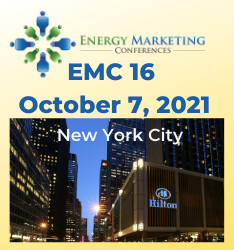|
|
|
|
|
Residential Customers On Competitive Supply At ComEd Paid $323 Million More Than Default Service Over Last Twelve Months, Annual ORMD Report Says
The following story is brought free of charge to readers by EC Infosystems, the exclusive EDI provider of EnergyChoiceMatters.com
The Illinois Commerce Commission's Office of Retail Market Development has published its annual retail electric market report, which includes a comparison of costs paid by customers served by an alternative retail electric supplier (ARES), including through municipal aggregation, versus the costs that would have been paid under default service
In aggregate, from June 2020 to May 2021, residential customers served by an ARES at Commonwealth Edison paid $316 million more than the ComEd Price to Compare, and $323 million more than the ComEd default service cost when including the impact of the bypassable Purchased Electricity Adjustment (PEA)
On average, residential ARES customers in the ComEd territory paid around $26.4 million more per month during the past twelve months when compared to the ComEd Price-to-Compare (PTC) and $26.96 million more per month during the last twelve months when compared to the ComEd PTC including the Purchased Electricity Adjustment (PEA).
In terms of cents per kWh, residential ARES customers in the ComEd territory paid about 3.716 cents/kWh more when compared to the ComEd PTC only, and about 3.8 cents/kWh more when including the PEA.
Staff reported that the highest ARES residential rate charged in the ComEd territory from June 2020 through May 2021 was a variable rate charged in January and February 2021 in the amount of 25.09 cents per kWh
At Ameren, from June 2020 to May 2021, residential customers served by an ARES paid in aggregate $155 million more than the Ameren Price to Compare, and $167 million more than the Ameren default service cost when including the impact of the bypassable Purchased Electricity Adjustment (PEA).
In terms of cents per kWh, residential ARES customers in the Ameren territory paid about 2.3 cents/kWh more when compared to the PTC only, and about 2.5 cents/kWh more when including the PEA.
The cost comparisons listed above include the impact of customers served by an ARES through opt-out municipal aggregation
Staff noted that, "on average, residential ARES customers (which were overwhelmingly municipal aggregation customers), paid about 2.54 cents more per kWh than Ameren Illinois bundled service customers between June 2020 and May 2021 when taking into account the impacts of the PEA."
Of the rate comparison data, Staff noted:
• These are total, or aggregate, savings. The savings for almost all individual customers differ from these averages;
• These calculations are ex-post calculations and do not take into account how the ComEd default rates would have been different had more or fewer customers stayed on the utility’s default supply service;
• Most of the ARES that serve residential customers have at least one offer that features a renewable energy or “green” component that is higher than what is required under the Illinois Renewable Portfolio Standard. The average rate information collected from the ARES include the (usually higher) prices associated with those offers;
• Not captured in these numbers are rewards and incentives that are not part of the ARES electric supply rates. For example, several ARES offer one-time gift cards as an incentive to sign up for a particular offer; other offers contain rewards such as airline miles and other non-rate benefits. However, those non-rate benefits are difficult to quantify and include in such calculations. Additionally, Staff would have to make several more assumptions and receive far more additional detailed data from the ARES community to quantify the non-rate benefits offered by ARES.
During the reporting period, the average rate for a municipal aggregation program in the ComEd territory was 6.570 cents per kWh and 4.521 cents per kWh in the Ameren territory
The share of residential aggregation customers decreased from 61% of all residential ARES customers in May 2020 to 57% as of May 2021.
The number of residential customers on competitive supply at ComEd was 941,997 as of May 2021
In the ComEd area, 43% of customers are municipal aggregation customers. This compares to 57% a year ago.
Of the 635,673 residential ARES customers in the Ameren Illinois area, 78% are municipal aggregation customers. That compares to a muni aggregation market share of 68% from 2020.
Staff reported that, using a Herfindahl-Hirschman Index (HHI) analysis, the ComEd residential market continues to be unconcentrated
At ComEd, the market share of the largest 3 residential suppliers was 31% as of May 2021, versus 41% in May 2020
No supplier had a ComEd residential market share above 15% as of May 2021 (compared to 1 supplier which had such share a year ago)
At ComEd, 63 of the 68 ARESs with residential customers had a market share of less than 5%
At ComEd, 47 of the ARESs with residential customers had a market share of less than 1%
At ComEd, five residential suppliers have a market share between 5% and 15% (versus three a year ago)
In contrast, the HHI values show that the Ameren residential market remains highly concentrated
Moreover, the residential market in two Ameren rate zones saw an increase in HHI values in 2020, which "show[s] that the market is becoming less competitive, as compared to previous years," Staff said
Rate Zone II saw the residential HHI value increase from about 5,000 to 7,000
Rate Zone III saw the residential HHI value increase from about 3,300 to 5,000
An HHI in excess of 2,500 points is generally considered to be highly concentrated
"Although all three Ameren Illinois RZs [rate zones] are very high market concentrations, Ameren Illinois RZ II continues to be the most concentrated residential market by a considerable margin. The facts that 78% of the residential ARES market in Ameren Illinois’ areas consists of municipal aggregation customers, and the vast majority of the aggregation programs are with the same ARES, help explain this phenomenon," Staff said
ADVERTISEMENT Copyright 2010-21 Energy Choice Matters. If you wish to share this story, please
email or post the website link; unauthorized copying, retransmission, or republication
prohibited.
Customers On Retail Supply Paying On Average 3.7¢/kWh More Than ComEd
August 5, 2021
Email This Story
Copyright 2010-21 EnergyChoiceMatters.com
Reporting by Paul Ring • ring@energychoicematters.com
NEW Jobs on RetailEnergyJobs.com:
• NEW! -- Senior Account Operations Analyst -- Retail Supplier
• NEW! -- Energy Procurement Manager
• NEW! -- Natural Gas Retail Analyst -- Retail Supplier -- Houston
• NEW! -- Associate Director of Market Strategy -- New York/Anywhere
• NEW! -- Energy Risk Professional -- Retail Supplier -- Houston
• NEW! -- Energy Customer Support Specialist -- Retail Supplier -- Houston
• NEW! -- Business Development Account Executive - Indirect Broker Sales -- Retail Supplier -- Houston
• NEW! -- Customer Engagement Manager -- Retail Supplier -- Houston
• NEW! -- Energy Customer Service Specialist
• NEW! -- Energy Sales Executive
• NEW! -- Senior Energy Intelligence Analyst
• NEW! -- Energy Advisor
|
|
|
|









